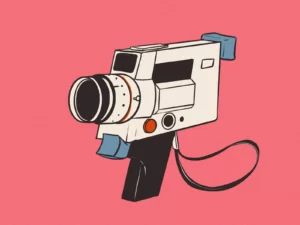We All Do Stock Images. But Consider This… We All Do Stock Images. But Consider This…

You go to a website to buy something, or to at least consider buying something, and like most websites, you are greeted with some text, some bouncy spinning things, and, some images. Within those images inevitably will be one of the following:
- Smiling person in a headset facing a monitor (monitor may or may not be turned on).
- Two people in an office looking at paperwork. Probably smiling also.
- Close up of hands holding pens, with paperwork and or a clipboard somewhere in shot.
Yep, stock images.
We all use them (including us…) but consider what they say about our business or our services. Do they help the audience or confuse them?
Why does a business need imagery in the first place? Why can we not use words to highlight our point of difference, or showcase our skills? Why can’t people be more patient and read more?
Well, because on their own, words do not tell the story as clearly as an image can. The saying goes that an image is worth a thousand words. It’s probably more like a million…
Stock images are easy, inexpensive, and therefore extremely tempting. But like most things cheap and easy, they inevitably disappoint and leave us feeling used and embarrassed and questioning our life choices (#KFC). Stock photos have the same impact. They provide little value apart from filling in space where “image” could go.
Stock images are troublesome for a few reasons, and here is our top six:
- Disingenuousness. They look unnatural and forced in many instances. Think, two people pointing at a computer screen looking perplexed. Friendly, smiling phone operator with a headset on. Office workers at a boardroom table looking at a marked up whiteboard. Everyone is so pretty, and their clothes are all ironed within an inch of their lives. Come on now… Why not shoot those themes in your own office and include employees who know how the business works, can appear more natural, and will more than likely resonate with your target audience? This achieves the same outcome, but your pictures are more genuine and personable, giving you a greater chance of being believed
- They do absolutely nothing for building authority and trust with your audience. We want to lessen the fear and uncertainty a potential customer has when it comes to buying our product or service, so the more honest we are, the less there is to be uncertain about. We know that man, woman, or gender-neutral person waiting in line at their local grocery store with their credit card out and a big smile on their face is FAKE… shopping is crap and credit cards should be used on stupid things we don’t need! First impressions matter, so being you at every opportunity is important or we risk losing the customers who genuinely want to believe us
- You have little creative control with stock images. Unless you are a photoshop beast you are left with whatever stuffy images you find with that ‘professional but passionate engineer at work in heavily ironed shirt’ search.
- They are not exclusive to you. It is possible your competitors might be using the same images, and in a world where it is difficult to be noticed, that is not a great result. If you are going down the stock path, use Google’s reverse image search to see who else is using a particular image on their website.
- You lose your brand identity. If we strip it back, it is your vision delivered by someone else’s execution (but without a brief). Consider it an Uber Eats order but with a “random” button.
- The meaning is fabricated by you. Photographers create cold, white labelled images because they need to appeal to larger audiences. The image you choose to represent your fancy crypto investment start-up might also be used by a nappy rash ointment brand.
So then, what am I to do?
Firstly, you need to be brave. Stock images are safe, and everyone uses them, so we accept them through mass effect. But consider these:
Custom photography:
This doesn’t have to be a Gucci shoot. An iPhone on a tripod will give you some quality shots. Brainstorm what images should make their way onto your website and spend a few hours getting it done.
Use illustrations and icons:
Illustrations and icons can be easier to create as they do not require reality to do so. Whether through the help of an internal resource or external party, vectors can achieve the same result as an image would be will be much less resource intensive to execute.
User Generated Content:
This one is a little harder for some businesses, but if you have a product or service that is easily ‘shareable’ on social platforms, you can use images that your customers are sharing of your product or service (with the creators’ permissions of course) on your website or as social media content.
Memes:
‘Meme Marketing’ is a real thing (yes I’m a millennial, calm down). Memes in brand imagery, when it is done right, works. Netflix, Wendy’s, NSW Police, and Gucci have all included memes in their marketing and they use them purposefully, and well. You need to know your audience of course and understand meme culture so you hit the mark but it can be very powerful for your brand and quite simple to create.
But stock images have their place…
Whilst nothing beats custom imagery for authenticity, familiarity, and imagination, not all businesses have the capacity to execute (budget, resources, creative input and so on). So if stock images do find a way into a website or document, consider personalising them in some way (with a quote, or watermark, or brand mark etc).
In the simplest sense, stock images are inauthentic and this matters because most of us are trying to build something real. Humanise your brand and show some personality because in a lot of cases, this will matter more than what it is you are actually selling.
(And, if you’re in IT and you don’t have a stock image of a server rack on your website – I owe you a coffee.)









